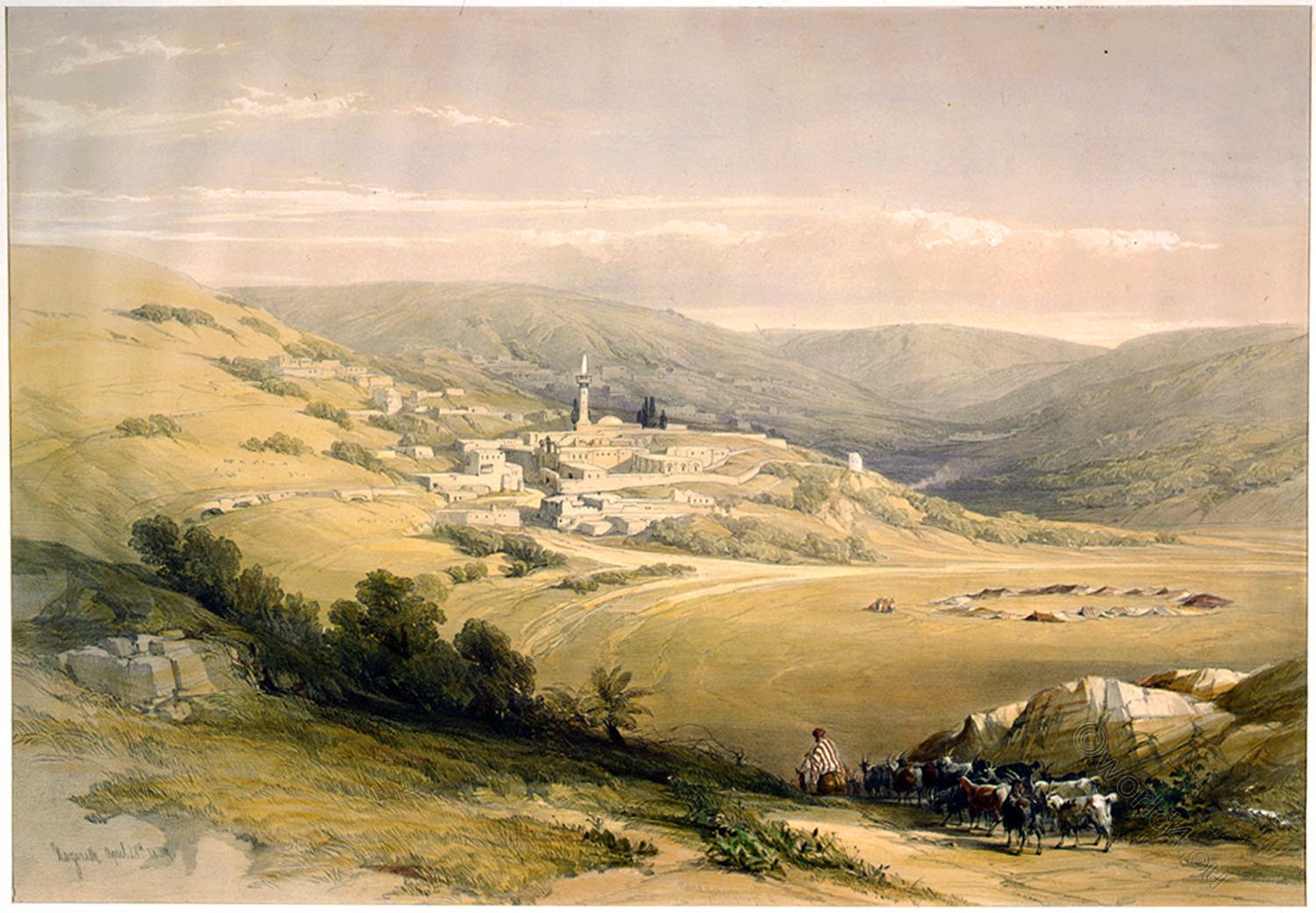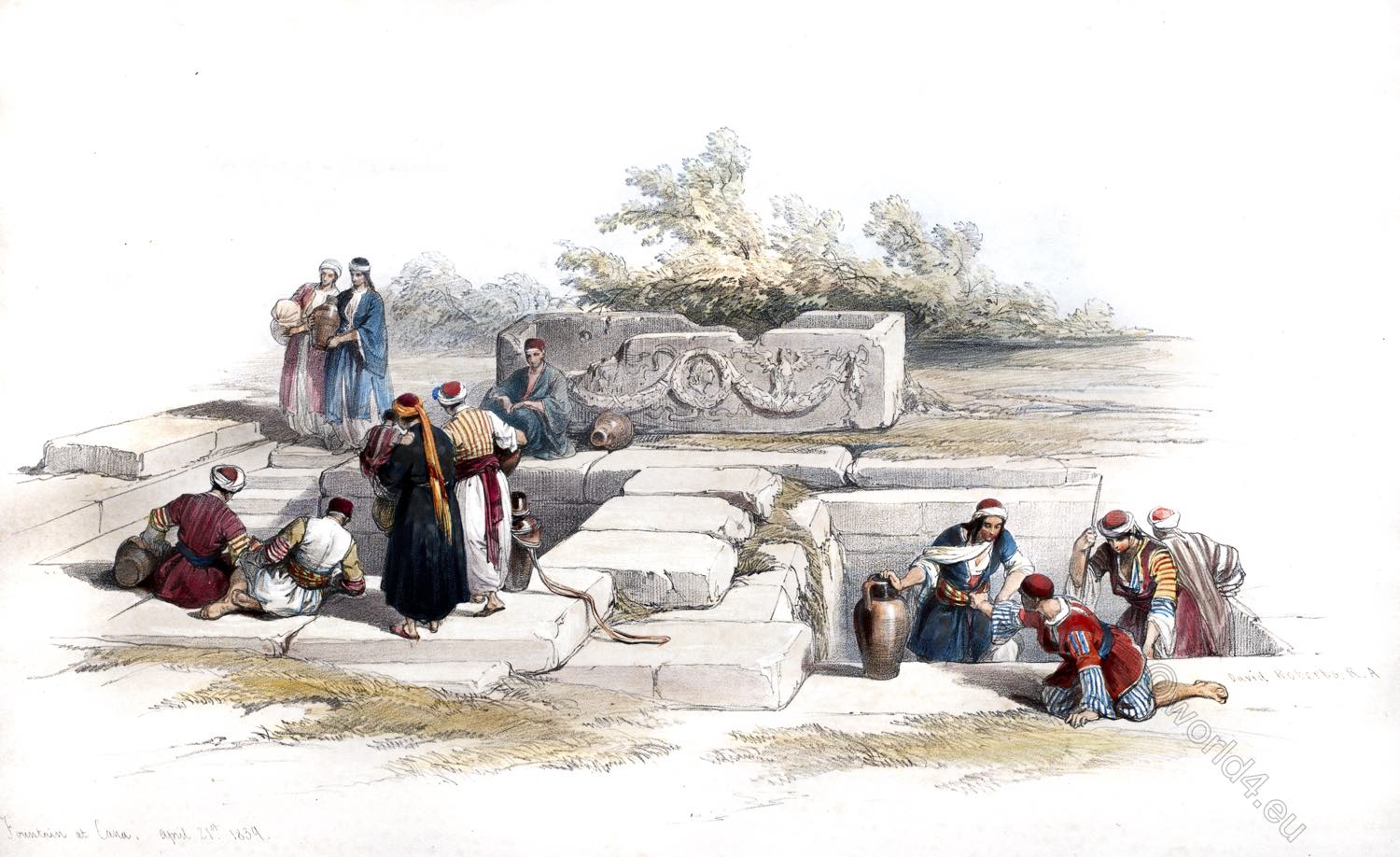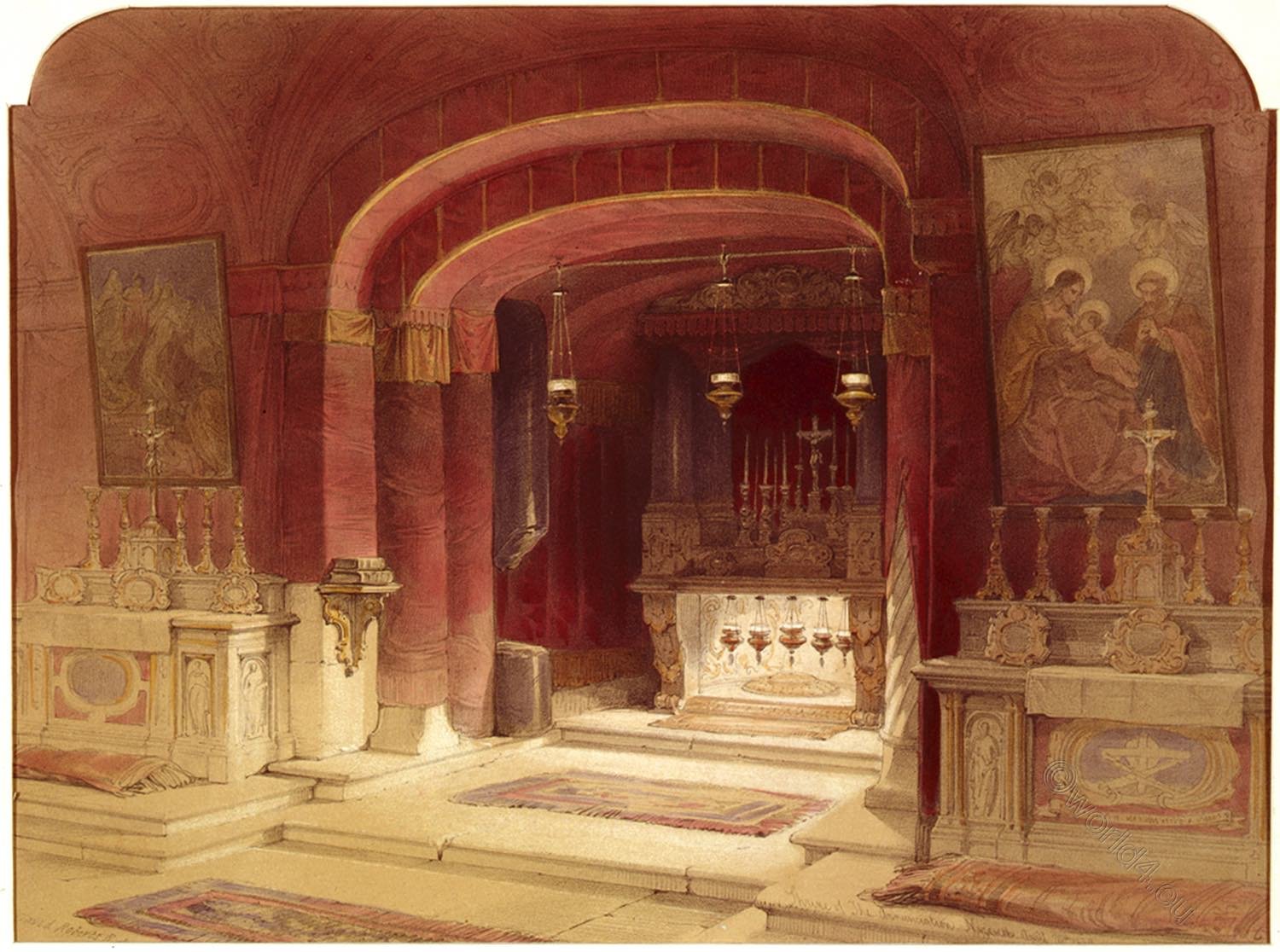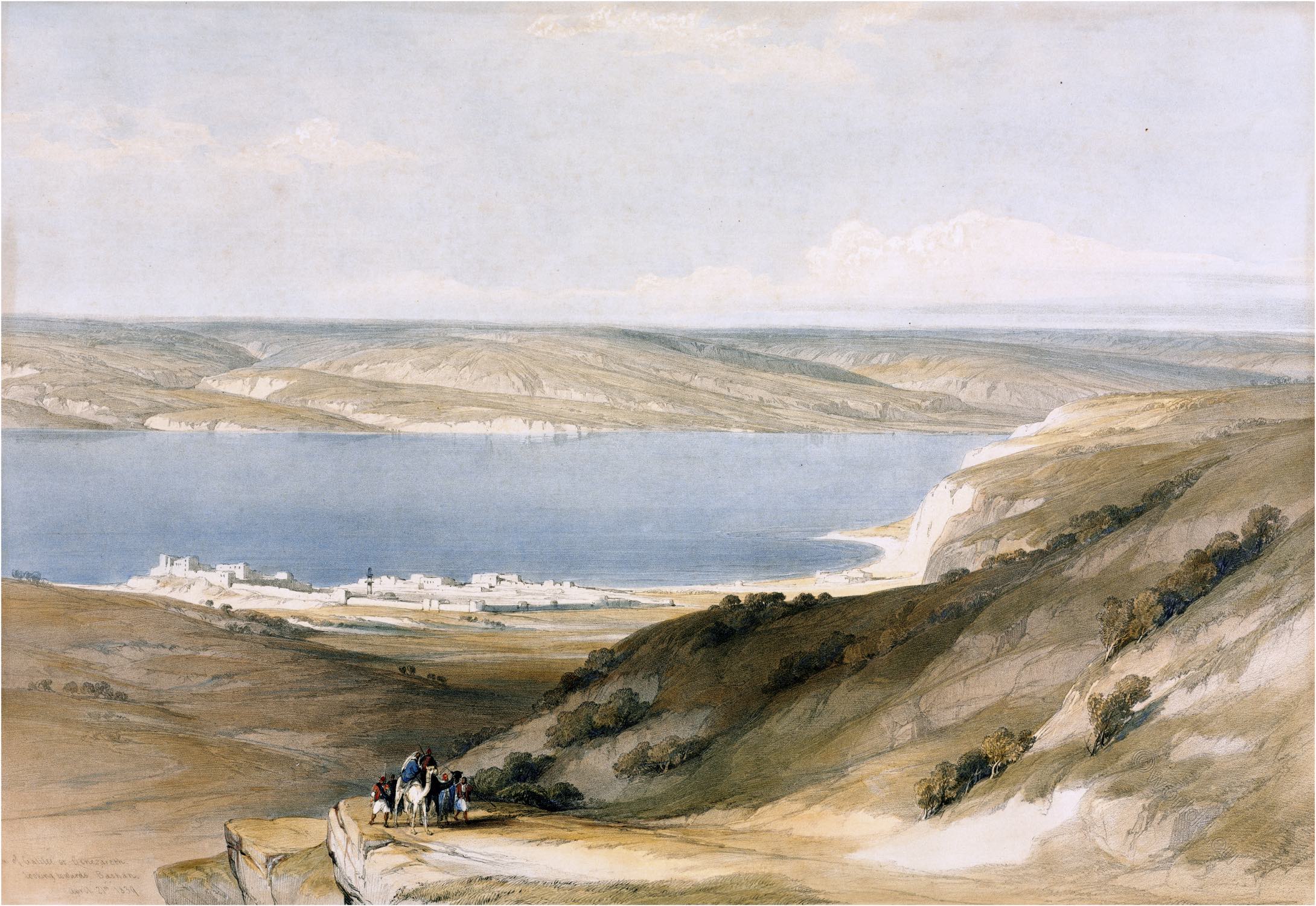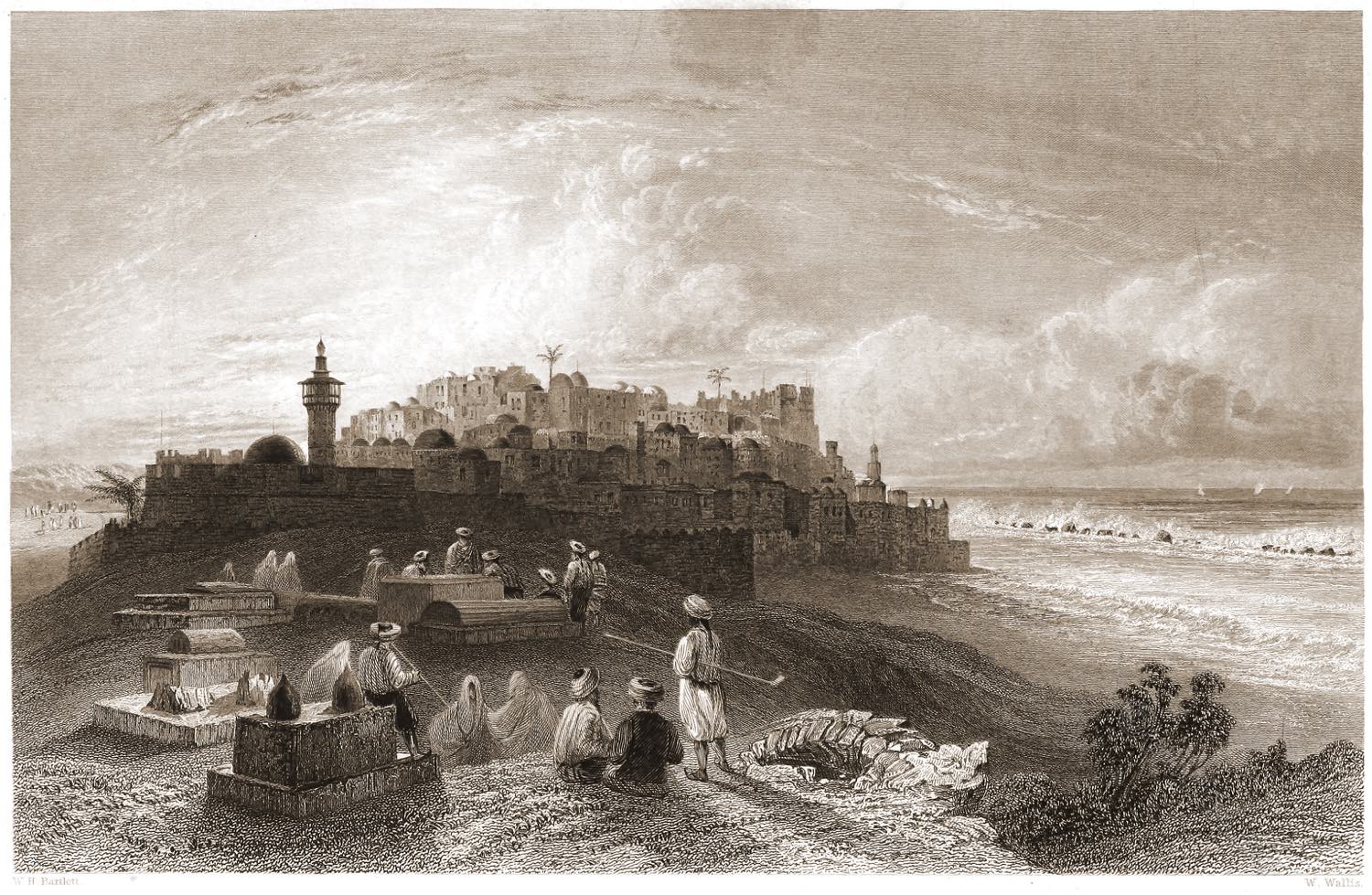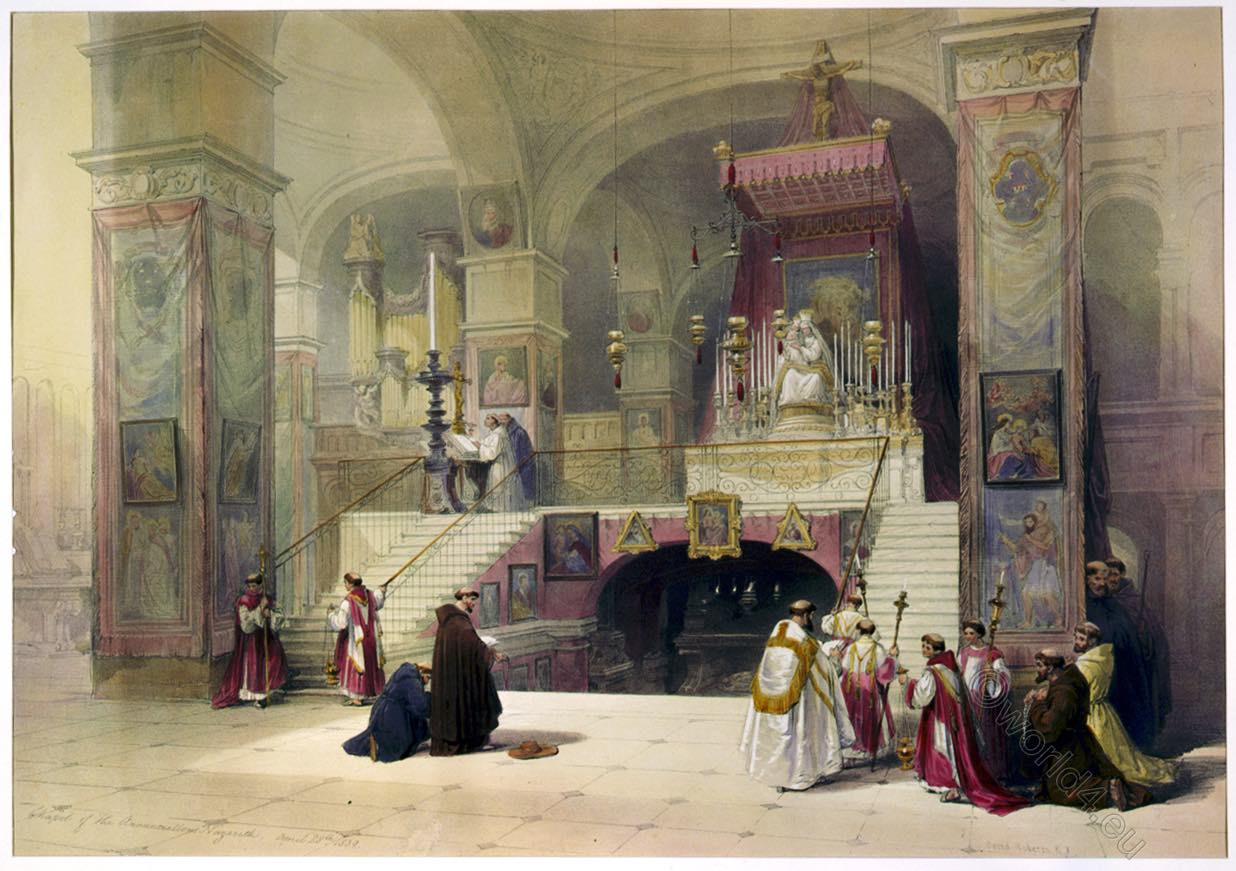
The Church of the Annunciation, sometimes also referred to as the Basilica of the Annunciation (Hebrew: בזיליקת הבשורה) is the main Catholic place of worship in the city of Nazareth, Israel. It stands on the site where, according to Christian tradition, the Archangel Gabriel announced to Mary the imminent birth of Jesus.
It is one of the main destinations for pilgrims visiting the Holy Land, along with the Basilica of the Nativity in Bethlehem and the Basilica of the Holy Sepulchre in Jerusalem.
CHURCH OF THE ANNUNCIATION.
The Church is a lofty nave, with three elevations. The highest is occupied by the Choir of the monks; the lower by the people; and communicating with the Choir and the High Altar is a handsome staircase. A door from the Choir opens into the Convent. The Convent is rich in pictures and ornaments, in which the Church largely shares; the columns and whole interior of the building being also hung with damasked striped silk, which gives it a glowing appearance.
Burckhardt 1) speaks of this Church as excelled in Syria only by that of the Holy Sepulchre. “Finding the door of the Church open,” says the author of the Biblical Researches, “we went in: it was the hour of vespers, and the chanting of the monks, sustained by the mellow tones of the organ, which came upon us unexpectedly, was solemn and affecting. The interior is small and plain, with massive arches; the hanging of the walls produced a rich effect: the whole impression transported me back to Italy. A barrier was laid across the floor, not far from the entrance, as a warning not to advance farther.” A precaution, perhaps, adopted through fear of the plague, which prevailed at the time.
It is, of course, not the province of these brief descriptions to discuss the conjectures of rival monks on the subject of those localities. From the strong competition of the Greek and Latin conventuals, it frequently arises that two spots are pointed out for the same event, and the disputants refuse to be reconciled. Thus the Greeks have their established scene of the Annunciation, but not on this spot. They allege that the Angel, not finding the Virgin in her home, had followed her to the fountain, whither she had gone for water, and there declared his divine mission.
“And in the sixth month the angel Gabriel was sent from God unto a city of Galilee, named Nazareth, to a virgin espoused to a man whose name was Joseph, of the house of David; and the virgin’s name was Mary. And the angel came in unto her, and said, Hail, thou that art highly favored; the Lord is with thee: blessed art thou anion” women.” 2)
The most popularly honored of all the relics of which Nazareth boasts, is the stone named “the Table of our Lord.” This is a large flat slab of the common limestone of the country, fixed in the ground, at which our Lord is presumed to have dined before and after his resurrection.
According to Hasselquist 3), it was formerly covered with sheet-iron, the nail-marks of which are yet to be seen. A Chapel has been built over it, and on the wall are copies of a Papal certificate, asserting its claims to reverence, and offering an indulgence of seven years ” to all who shall visit this Holy place, reciting there, at least, one Pater and one Ave.”
“There is not,” says Dr. Clarke , “an object in Nazareth so much the resort of pilgrims, Greek, Romish, Arab, and even Turk, as this stone. The Greek and Latin pilgrims resorting to it from devotion, and the Arab and Turk to see the wonders which it is presumed to work on the devotees.” 4)
1) Burckhardt, John Lewis (1784-1817) was a Swiss traveller, geographer and orientalist. Travels in Syria and the Holy Land 1822.
2) Luke, i. 26, 27.
3) Fredrik Hasselquist (1722-1752 Swedish naturalist). Voyages and travels in the Levant in the years 1749, 50, 51, 52: containing observations in natural history, physick, agriculture and commerce: particularly on the Holy Land and the natural history of the Scriptures.
4) Clarke, Edward Daniel, 1769-1822 was an English mineralogist and naturalist. Travels in the Holy Land.
Source: The Holy Land, Syria, Idumea, Arabia, Egypt, & Nubia, by David Roberts, George Croly, William Brockedon. London: Lithographed, printed and published by Day & Son, lithographers to the Queen. Cate Street, Lincoln’s Inn Fields, 1855.
Continuing
Discover more from World4 Costume Culture History
Subscribe to get the latest posts sent to your email.

